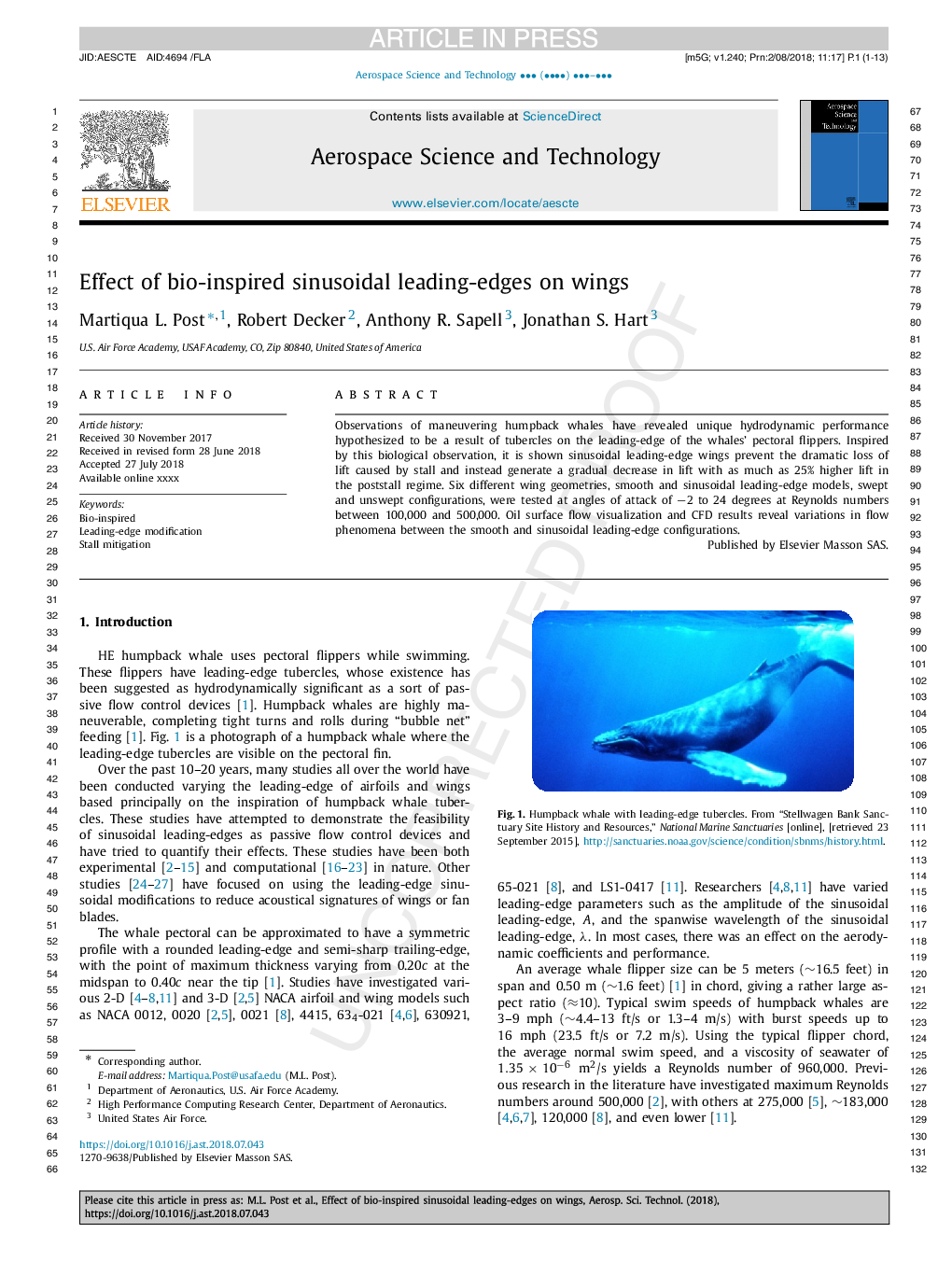| Article ID | Journal | Published Year | Pages | File Type |
|---|---|---|---|---|
| 8057200 | Aerospace Science and Technology | 2018 | 13 Pages |
Abstract
Observations of maneuvering humpback whales have revealed unique hydrodynamic performance hypothesized to be a result of tubercles on the leading-edge of the whales' pectoral flippers. Inspired by this biological observation, it is shown sinusoidal leading-edge wings prevent the dramatic loss of lift caused by stall and instead generate a gradual decrease in lift with as much as 25% higher lift in the poststall regime. Six different wing geometries, smooth and sinusoidal leading-edge models, swept and unswept configurations, were tested at angles of attack of â2 to 24 degrees at Reynolds numbers between 100,000 and 500,000. Oil surface flow visualization and CFD results reveal variations in flow phenomena between the smooth and sinusoidal leading-edge configurations.
Keywords
Related Topics
Physical Sciences and Engineering
Engineering
Aerospace Engineering
Authors
Martiqua L. Post, Robert Decker, Anthony R. Sapell, Jonathan S. Hart,
